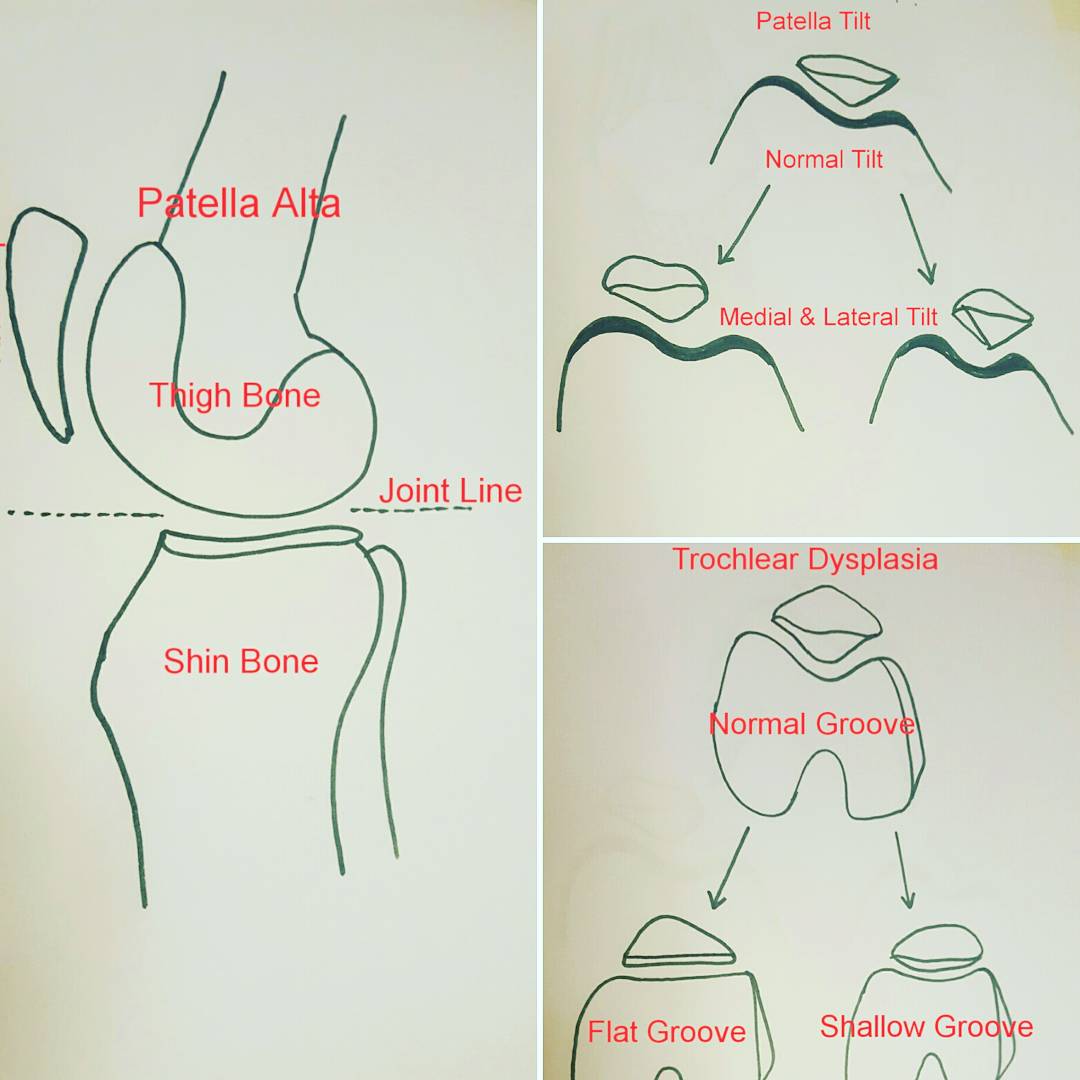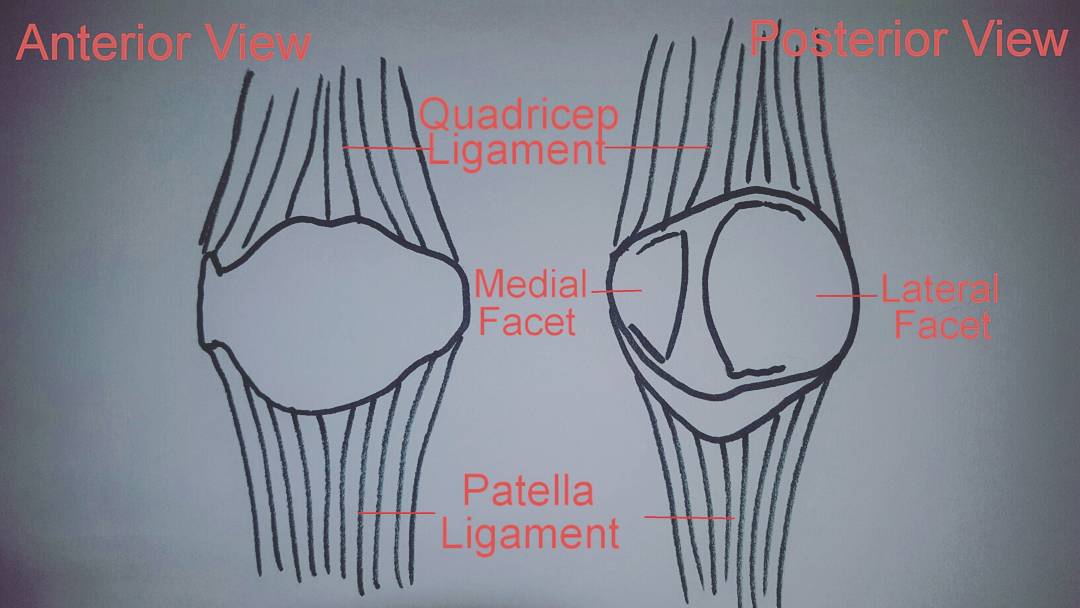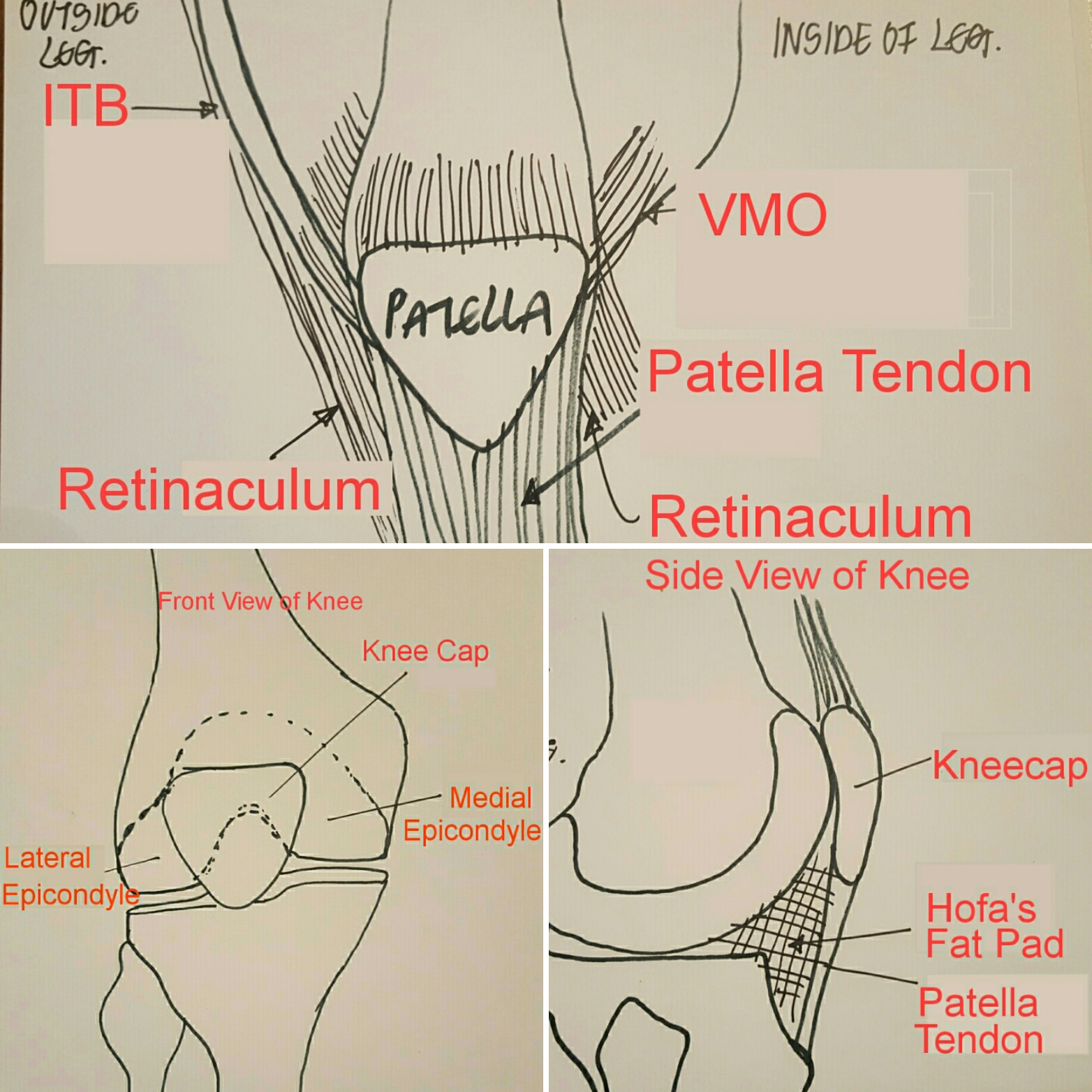
Kneecap Pain: Part 1
#PATELLOFEMORAL PAIN CAUSES PART 1: INVOLVING THE KNEECAP ITSELF - #Patella Alta - above left diagram. Generally kneecaps sit in the groove and the bottom of the kneecap is about level with the joint line. However, people born with an unusually high knee cap or those left with one after surgery are susceptible to much faster degeneration of the back of the kneecap as it doesn't sit in the groove well. If the bottom angle of the #kneecap is line with or below the joint line (imaginary line where the knee bends) this is considered to be 'normal' or less likely for #cartilage damage to occur as quickly as when it is high. - #Trochlear Dysplasia - see above bottom right. This is when instead of having a stable groove to sit in. The kneecap sits in a shallow or flat gro

Front of the Knee Pain: Part 2
PATELLOFEMORAL PAIN SYNDROME Above is a picture of the patella/kneecap. #Patellofemoral pain is a range of pains or disorders that can be anything from mild discomfort to severe pain. The pain is thought to originate from contact between the back of the knee cap and the thigh bone. The pain source of the cartilage is controversial. Many studies indicate it is not the #cartilage on the back of the kneecap but the soft tissues around the knee or the bone underneath the cartilage (subchondral bone) that causes the pain. There are various causes, these can include: 1. Overuse/Repetitive Strain/Over loading 2. Arthritis 3. Trauma/Injury 4. Excessive Weight 5. Malalignement (GENETIC OR ENVIRONMENTAL) 6. Imbalance of structures around the knee cap To name a few caus

Front of the Knee Pain: Part 1
PATELLAFEMORAL PAIN PART 1: So that you have an idea of the function of the patella aka kneecap, I have drawn 3 images above that I hope will help. As the knee bends from a totally straight position to a totally flexed position there are different structures that come into contact with the kneecap, which help in diagnosis of knee pain. So... In full extension (straight leg) there is minimal compression on the back of the kneecap. However HOFA'S FAT PAD can be caught, so banana shaped pain in full extension under the knee cap may be due to the fat pad (also pinches in full flexion). See diagram. As the knee begins to bend, the kneecap gradually gets more and more compressed from behind by the thigh bone. At 20 - 30 degrees --> it begins to come into contact with the gro
